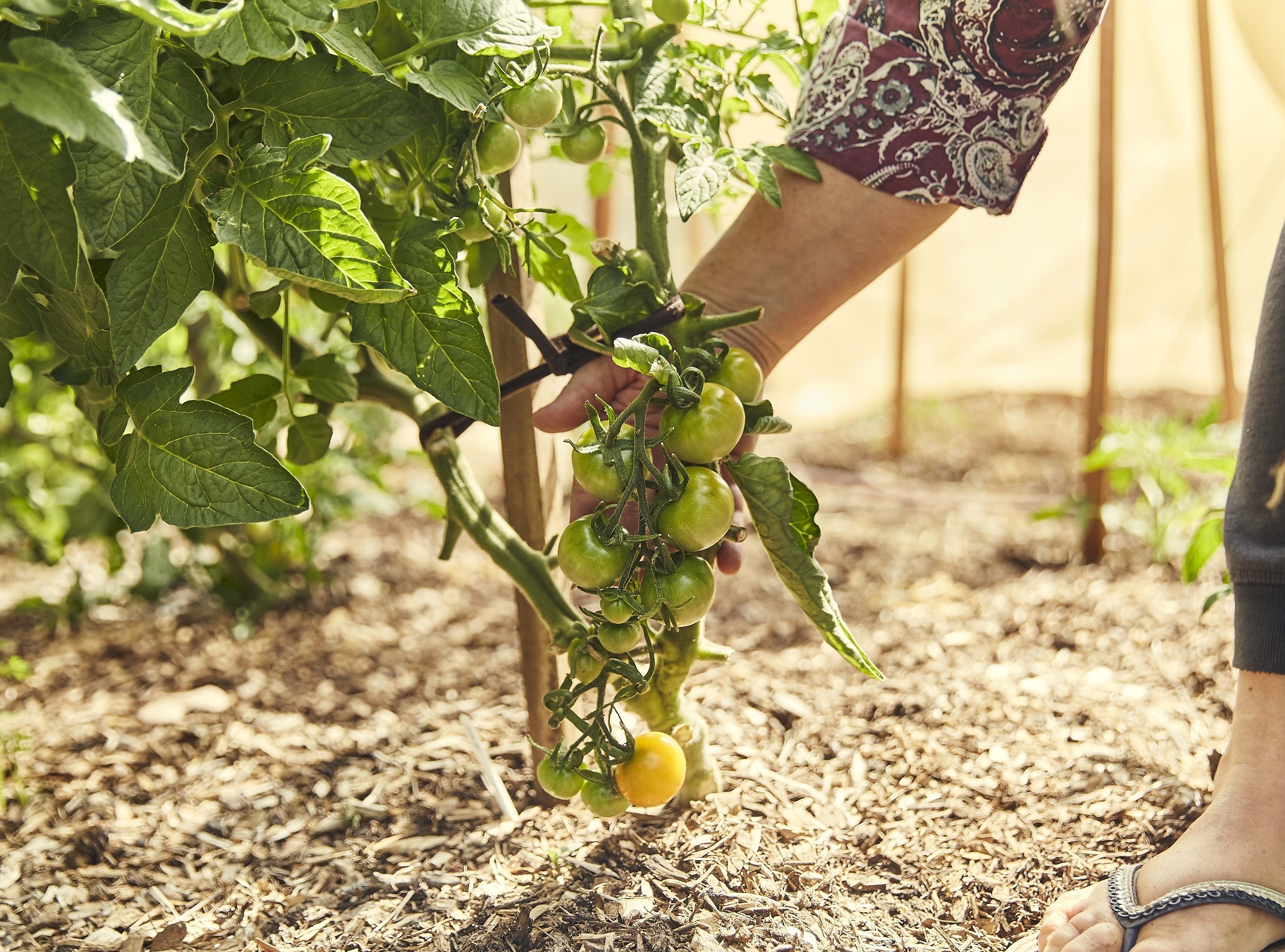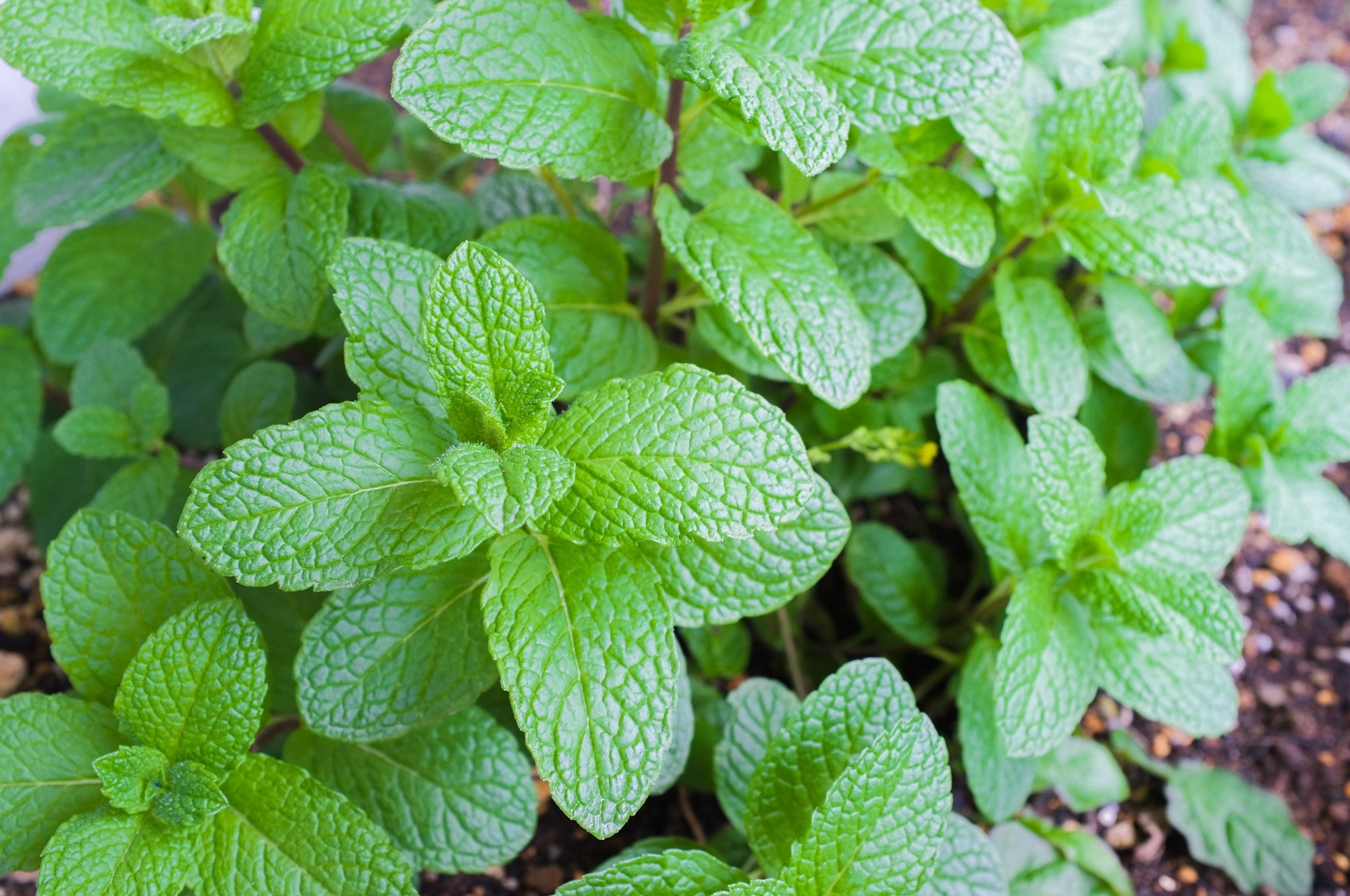While some plants prefer to be grown from seed, others are not so fussy. Read on to discover 9 vegetables and herbs that you can grow from seedlings, right now in spring – plus some tips to help them thrive.

Some edible plants really don’t enjoy being transplanted, which means that if you buy them as already-sprouted seeds – aka seedlings – they could struggle, produce a sub-par crop, die, or skip the delicious phase and go straight to seed.
But some aren’t as fussy. Seedlings can give you a quick feeling of success – as long as you’re planting the right ones.
When starting out on your food gardening journey, you can set yourself up for success just by knowing which plants are happy to be grown from seedlings and which are best grown from seed.
Here’s 9 seedlings to get in the ground now:
1. Tomato
Does anything really beat biting into a cherry tomato naturally warmed by the sun and picked fresh from your own plant?
There are so many different tomato varieties – some are better for making passata and others better for a salad.
You’ll also find different plants that grow a bit different; some can be supported to climb up a trellis, while others are bushier.
Do some research and don’t be afraid to be adventurous – stupice, lemon drop or green zebra could become your new favourite tomato.
Whatever the tomato, you’ll want to give it lots of sun – at least 8 hours a day.
2. Capsicum
Capsicums don’t like ‘wet feet’ – essentially, having their roots wet all the time.
Generally they will prefer to be watered every second day, but it does depend on exactly how much sun they’re getting and whether they’re planted in a pot or the ground.
The size of the pot matters too, as small pots will dry out faster. The best bet is to feel the soil and when it’s dry, water it.
Like tomatoes, they need a minimum of 8 hours sunlight per day.

3. Eggplant
Eggplants love the sun too – which is really the case for any fruit-producing plant. The reason? The plant needs energy, which it gets from the sun, to produce fruit, and by ‘fruit’ we mean the part of the eggplant that we eat.
Don’t plant eggplants, or anything else that you hope to get fruit from, in the shade.
Set your eggplant seedlings up for success by planting them somewhere they can get a minimum of 8 hours of sun per day.
4. Parsley
Parsley is a great herb to have in the garden – use it for garnish, tabbouleh or turn it into a pesto, just to name a few things – and growing it can save you money, especially when you just want a few leaves and not a full bunch.
When planting your parsley seedlings, keep in mind they need 6 hours of sunlight per day – ideally more.
If you have the option, plant your parsley near the kitchen so you don’t have to go far when cooking.
Unfortunately parsley doesn’t keep growing forever. When the plant goes to seed, you’ll need to collect the seeds and re-plant, or hope that they find their way to a suitable spot in your garden to start growing again on their own.

5. Basil
Who doesn’t love basil?
You’ll only get one season out of a basil plant, so it’s great to get your basil growing in spring so you can enjoy all summer long.
Similar to parsley, when the plant goes to seed you can harvest the seeds or let them drop naturally onto the soil so they can re-grow on their own next season.
Did you know that the way that you pick basil can actually impact how soon it goes to seed?
Rather than picking a leaf here and there, snap off the whole top of a branch, including the stem, each time you want some basil.
This will stop the basil growing flowers and going to seed, and will create more growth further down the plant, giving you a bush-like plant instead of something that looks like a mini tree.
6. Thyme
Aside from its obvious cooking uses, thyme, which grows like a groundcover, can be used as a ‘living mulch’. This makes it perfect for garden bed edges, which dry out quicker than the rest of the garden.
It’s happy to grow close to other plants too, so you can also use it to fill up any gaps in your garden.
Thyme is a perennial, so unlike parsley and basil, one plant can last many years.
7. Oregano
Oregano, which is wonderful in pastas and on pizza, is another perennial plant and is also great for edging. You may want to keep it under control though because it will keep spreading if you let it – you decide whether that’s a problem!
If it starts going to seed, chop the tops off – yep, flowers included – and eat them. Or you can leave the flowers for the bees and other helpful insects to enjoy.
Oregano is really hardy so don’t be shy to cut it back to a shape and size you like.

8. Mint
There’s a lot to love about mint – teas, salads, cocktail garnishes – but the plant itself sends out long runners underground and will spread, and spread, and pop up elsewhere, if you plant it in the ground.
Your best bet is to plant it in a pot – or accept that it will likely take over your garden.
Once you have planted your chosen variety, such as mint, spearmint or peppermint, you should have it forever – all going well.
9. Rosemary
Did roast potatoes automatically come to mind?
Not only is rosemary a delicious garnish but because the plant can grow to about 1.5 m tall it’s a great option for a hedge.
If you’re pressed for space or are in a rental where you don’t want to plant in the ground, you can still grow this herb in a pot and trim it to keep it a manageable size.
Find out more local food gardening tips
Seedlings are a great way to give you a head start but some things prefer to be grown from seed, knowing how to grow from seed will expand your options and be more economical. Discover 9 vegetables best grown from seed.
Just beginning your food gardening journey? Head to our hub for more tips and tricks.